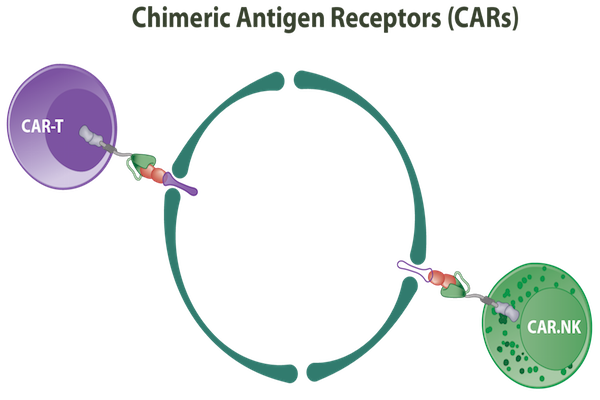Synergistic effect of chimeric antigen receptors and cytokine-induced killer cells: An innovative combination for cancer therapy
DOI:
https://doi.org/10.15419/bmrat.v3i06.99Abstract
In recent years, the combination of gene and immunotherapy for cancer treatment has been regarded as innovative and promising; together, both therapies can help overcome limitations associated with conventional treatments. In order to augment anti-cancer efficacy and to maintain the specificity of antibody therapy, chimeric antigen receptor (CAR)-modified T cells, directed toward tumor-specific antigens, have emerged as a novel and promising therapeutic platform. CARs consist of a B cell receptor (BCR)-derived extracellular domain and T cell receptor (TCR)-associated signaling elements. Cytokine-induced killer (CIK) cells are the effector immune cells that can be activated ex vivo and possess both the anti-tumor potency of T lymphocytes and the non-major histocompatibility complex-restricted elimination of natural killer cells. With their pre-eminent ability for robust proliferation, CIK cells may overcome the main limitations of adoptive immunotherapy strategies. CIK cells have strong tumor cell killing capacity; they are effective against a wide variety of malignant tumors and have been shown to be safe in cancer patients. This review summarizes the characteristics of CARs which make them attractive for in cancer treatment strategies. In addition, the role of CIK cells and the advantages of combining CIK cells with CAR-based therapy will be discussed. Scientific evidence to support their combined therapeutic application will be highlighted, with a focus on how their innovative combination may be translated into cancer clinical trials.

Downloads
Published
Issue
Section
License
Copyright The Author(s) 2017. This article is published with open access by BioMedPress. This article is distributed under the terms of the Creative Commons Attribution License (CC-BY 4.0) which permits any use, distribution, and reproduction in any medium, provided the original author(s) and the source are credited.
